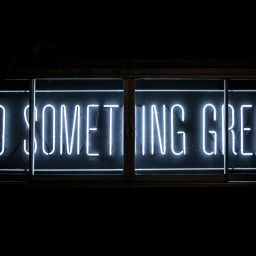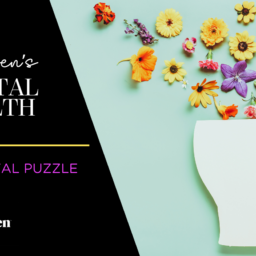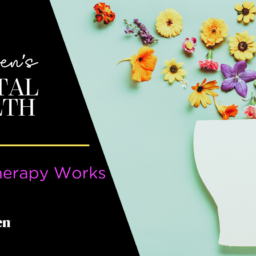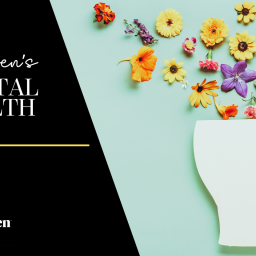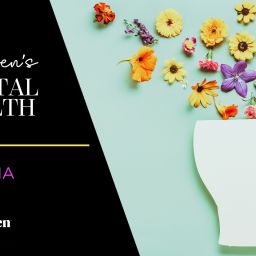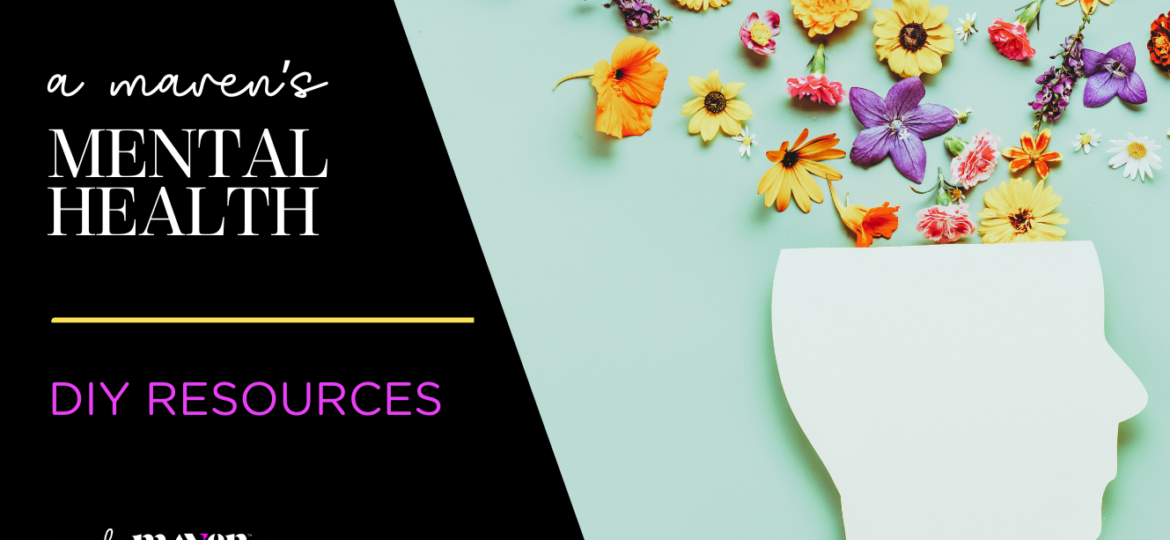
 Welcome to Indy Maven’s Mental Health column coming by way of Adair McDonald, LMHC (she/her/hers). Check out her website for information about how Adair works with clients, and to contact her directly to book a session.
Welcome to Indy Maven’s Mental Health column coming by way of Adair McDonald, LMHC (she/her/hers). Check out her website for information about how Adair works with clients, and to contact her directly to book a session.
I love that there are so many free resources out there to help people build themselves up. When we find the tools that truly speak to us, we learn to change our thoughts, notice our feelings and ultimately gain more control over our experience of being human in this wild world. However, I’ve found that if resources are too plentiful or shared in too general a manner, it is difficult for us to cut through the noise and commit to utilizing any of them. I’m a therapist, and I even feel overwhelmed by the sheer volume of mental health advice out there. But I tend to come back to these resources over and over again. I hope you will be positively impacted by at least one resource on this list and maybe even find an important key to lasting, positive growth.
 FOR VISUAL LEARNERS
FOR VISUAL LEARNERS
These will allow you to learn a ton about mental health in general and likely help you know yourself better.
Brene Brown: The Call to Courage (Netlfix)
I’ve shared this with a wide variety of clients, friends and family. I actually didn’t watch it for the longest time because I’d seen or read much of Brene’s content already. But this special really brings all of Brene’s content together. I was entertained and inspired. When my mom told me she saw this and loved it, I knew I could confidently share it with all sorts of people. She and I don’t always agree about self-care (she’s one of the hardest working people I know and refuses to get a massage because it’s weird to have people touch her) but she resonated with Brene and seemed to gain self-compassion and understanding from watching the special.
Stutz (Netflix)
This is Jonah Hill’s love letter to the process of therapy, to his therapist and, most importantly, to his own younger self. Be prepared to weep. It’s filled with the heart and soul of meaningful change, as well as creative twists and turns. The most important aspect of successful therapy is a good relationship with your therapist so you can know that all parts of you are welcomed with curiosity rather than judgment. Stutz (the therapist) has a no-bullshit approach, but even when he’s being blunt, you can tell how much he genuinely cares for his client, and vice versa. And beyond all that, the movie contains much practical advice that will help the viewer address their particular challenges.
Four Horsemen of the Apocalypse (YouTube)
An explanation of the Four Horsemen of the Apocalypse that kill relationships according to research by The Gottman Institute, a widely respected resource for relationship counseling. The four relationship killers are criticism, contempt, defensiveness, and stonewalling. This is a great one to help get real with yourself and your partner(s) about how to love each other better.
If you choose to watch these, you might bring some paper and pen to write down a few impressions that spoke to you personally; then those ideas can be journaled about, discussed with a dear friend, or brought up in a therapy session.
 FOR AUDIO LEARNERS
FOR AUDIO LEARNERS
I’m an audio learner, and I love the feeling of connection when listening to someone tell her story or share information they are passionate about. Here I’ll just share some specific episodes that I frequently share with clients or colleagues.
Back from The Abyss: Psychiatry in Stories: “(Almost) Everything About Psych Meds…In Under 16 Minutes”
Psychiatrist Dr. Craig Heacock is awesome. He’s out of Colorado and private pay only, so he has the freedom to run a creative practice utilizing psychedelics and other cutting-edge techniques. He also has a big heart and the generosity to spend time sharing his knowledge and stories on this podcast. Big fat disclaimer here: I am not a prescriber, and this isn’t medical advice. Not all prescribers will agree with his opinions. However, it is a tool for you to use to ask better questions if you’re wondering about taking or changing your medications for mental health conditions.
Where Should We Begin? With Esther Perel: Married Twice, To Each Other
Goddess on Earth, Esther is…just…miraculous. Able to convey humility and utter confidence all in the same breath, she also speaks 9 languages and understands cultural impacts on couples in ways that most U.S. born therapists cannot. Thus she is a great teacher to us all. She’s written several books and given countless talks on relationships, communication, sex and intimacy. Listening to these couples’ sessions is the closest most of us mere mortals will get to working with this master therapist. Even if it seems the couple’s presenting issue has nothing to do with you…take a listen. You might hear some themes that are pretty familiar to you or someone you love.
The Tim Ferriss Show: IFS, Psychedelic Experiences without Drugs, and Finding Inner Peace for Our Many Parts
I never thought I was his intended audience, but when he was featured on Brene Brown’s podcast, I discovered he’s a survivor of childhood sexual abuse and works very hard to manage his own mental health in a wide variety of creative, out of the box ways, and now I’m a fan. One day I was listening to his episode with Dick Schwartz, creator of IFS (the Internal Family Systems approach to psychotherapy), and I stopped washing dishes and just stood totally still, entranced and listening to the “bit of work” they were doing together to help Tim comfort his inner child. In a nutshell, IFS is a theory that invites us all to realize we have many parts inside of us and one highest self. When we know our parts and why they do what they do (or feel how they feel), and learn to be Self-led, we can live our best lives and even heal trauma. If I’ve lost you, it’s okay. Just listen to this podcast and start noticing your own Self and parts.
 FOR HANDOUT LEARNERS
FOR HANDOUT LEARNERS
I was originally going to label this section “Homework”, and my 10-year-old suggested instead “Helpwork”. Done forever, I love it! He instinctively reacted to the pressure of the word homework. These tools are always optional, and if we feel pressure to do it all, we might start stressing ourselves out and defeating the purpose of all this. When I share a handout or exercise with a client, it is an invitation, not an obligation.
Therapist Aid has tons of free worksheets. Here are two I frequently share:
Wise Mind is the idea that if we are ruled only by emotion or only by intellect, we are out of balance and could be harming ourselves or others. But if we can use intellect to make sense of our emotions and allow two truths to exist together, we can find wisdom to inform our decisions and behaviors. I like for people to print this and put it where they can see it and be reminded to use it.
CBT (Cognitive Behavioral Therapy) approaches aren’t for everyone in every situation, but most people find it pretty helpful to realize there are common “irrational” patterns of thought that we can become aware of and change. This is often the first step in realizing that our thoughts and feelings aren’t facts and we can change them.
 FOR EMBODIED LEARNERS
FOR EMBODIED LEARNERS
Once we have an understanding of what we’re working on, it’s important to also have physical, somatic, “embodied” coping or grounding techniques. Understanding a concept is great, but feeling better way deep down to our souls means getting into our bodies, where our emotions live.
This is my very favorite resource of all to share with just about everyone. Here’s why: it takes less than 3 minutes to watch and practice, and after that, it takes about 1 minute twice per day. It is a breathing technique so powerful it has been taught to the CIA by Dr. Andrew Weil, featured in the video. It seems to reset the nervous system so that if you practice regularly, your baseline for anxiety is improved overall, and it can be used “as needed” (once you’re comfortable with it) to calm panic, worry, insomnia and to help reset after any overwhelming emotion or experience. I personally like to do it after an intense therapy session with a client before I see my next one.
Burnout: The Secret to Unlocking the Stress Cycle by Emily and Amelia Nagoski (twin sisters). Aimed particularly at women and how we experience stress in this culture. It’s not free ($10 on Amazon), and at the time of this writing there’s a predicted 4-week wait on the Libby library app, so I’ll give you the gist here.
We’ve all heard over and over again about the importance of exercise for managing mental health, yet many of us feel too busy to work out or simply haven’t found a way of moving our body that truly feels good. This book not only lays out the science of why certain techniques help us release stress and trauma, but it also provides alternatives for those of us who don’t easily find pleasure at the gym. My biggest takeaway from the book is whether we like it or not, we carry the stress of our days with us in our bodies, and if we don’t actively work to release it, it will slowly erode all aspects of our wellness. But the good news is once we become aware of this stress, we can choose to release it by “completing the stress cycle.” The book suggests 20-60 minutes of exercise per day (dancing, running, swimming, heart-pumping yoga) but acknowledges that many of us struggle to have the time or ability to do this.
It’s ableist to assume everyone can exercise in the typically prescribed ways. But tension and release exercises are a great alternative. Simply start at the top of your body and go all the way down, section by section. Squeeze all the muscles in your face for a few moments, then release completely (check your jaw). Then do your neck and shoulders. Then your midsection. Then your arms and hands. Then your pelvic floor and butt. Then your thighs. Then your lower legs, feet, and toes. You may also start at the bottom and go to the top, whatever you prefer. You can do this as often as you like throughout the day, or in bed at night to promote better sleep. You should feel more centered and calm by the end of the exercise.
Other ways to complete the stress cycle are laughter, a good cry, deep breathing, positive social interactions (this can be as simple as giving a genuine compliment to a stranger), creativity, and affection (try a 20-second hug and really let yourself melt into it). Different people like different things, so hopefully you’ll find something here that works for you. Most of these take very little time, no money and can have a huge impact over time.
And that’s it! I’ve had so much fun putting this list together and imagining who out there might find something that speaks to them personally. If it is you, reading this now, it is my sincere wish that you know you deserve to feel freer, healthier and more connected to your truest, authentic self. You’ve heard it a million times, and you’ll hear it again: self-care is not selfish. It is our right and responsibility as humans to care for our one and only self, and we do our best work for others when we come from a strong and healthy foundation. I hope you find something here that will help you love yourself better so you can have more joy, peace, and meaning each day.
Adair McDonald, LMHC (she/her/hers) can help with healing trauma, anxiety and panic, pregnancy and postpartum emotions, relationships, adult ADHD, and getting unstuck, among other things. You can book a session with her directly at adairmcdonald.com. Disclaimer: Adair is not a prescriber and this isn’t medical advice.
All of our content—including this article—is completely free. However, we’d love if you would please consider supporting our journalism with an Indy Maven membership.






